

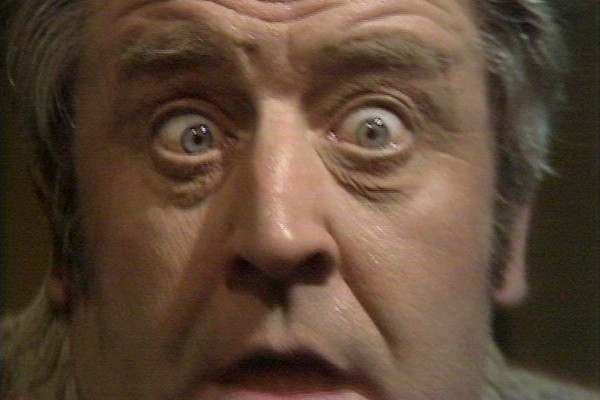
The Red Sky is one of the lower-key concepts of the first season, looking at hallucinations brought on by low-flying aircraft. Written by Kit Pedler and Gerry Davis, it sees the use of a new jet engine which causes sensory difficulties when heard from the structure of a lighthouse. There is more than a little contrivance with the storyline, in that Quist, suffering from stress, decides to take a holiday in the exact same location where the problems are taking place, but this is one of the better episodes, as evidenced by the relatively high placing.
With the show's "as live" multi-camera tendencies, there are regular technical issues with the production which have to be glossed over in order to truly engage with the stories. Often episodes will feature one of the crew audibly coughing in the background, or moving equipment while the actors say their lines. Many episodes feature the shadow of the boom mike as it drifts over the studio, but with this particular instalment there's at least three occasions where the boom mike itself is actually in shot. A fairly strong episode, but one of the weakest in terms of production.
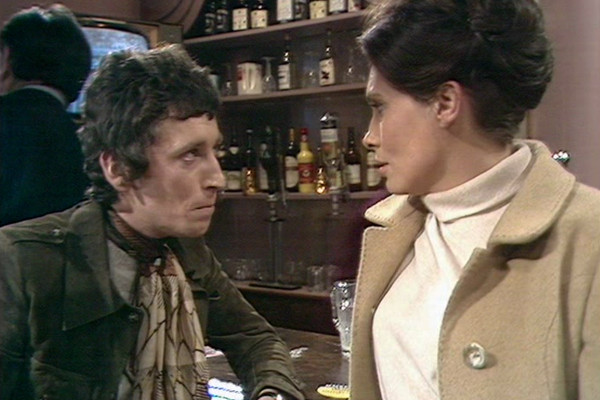
In addition to the cited numbers of writers in this article, another must be added here - N.J. Crisp. His original script, "The Lord of the Humans", was so heavily rewritten by Gerry Davis (and reputedly based on a Pedler-Davis concept) that Gerry was able to take the onscreen credit. Featuring the odd concept of a character introduced "between episodes", we find that Doomwatch has a new operative, Dr. Stella Robson (Hildegard Neil). An investigation from outside suggests that both Robson and Wren cannot be trusted, and Quist is ordered to suspend them both.
Robson turns to her lover (involving some of the most chaste, sexless kisses ever screened after the 1940s) while Wren turns to drink. Robson is eventually relieved from duty, though it comes as no real surprise that Wren is reinstated. It all ends with a speech from Quist about man vs. computers, the kind of pious speech-making the character would sadly get dragged down into more and more as the series progressed.
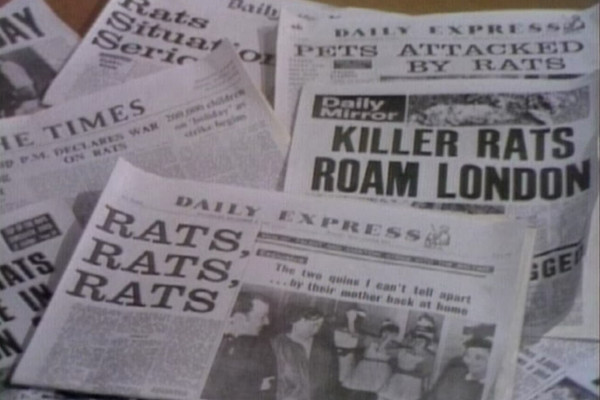
There's more to cult television than just strong production, and even the slickest television of today is the dated television of tomorrow. Indeed, the Anorak Zone delights in cheap-but-imaginative TV, with the majority of these "worst to best" articles dedicated to series that specialise in big ideas, small budget.
However, there is the inescapable feeling that a more gritty, "realistic" series like Doomwatch would have benefitted from some of the larger budgets that ITC were able to summon, rather than the clearly cash-strapped pittance the BBC had thrown together. Fake-looking rats are fine, to a point, in a more humorous, science fantasy-based series like Doctor Who. However, in a series like Doomwatch, where a talented actor like Robert Powell takes it all deadly seriously, it can be a make or break moment.
It's tempting to be the bigger man and say that it doesn't matter that the centrepiece of this episode is Powell banging a fake rat on a table like Vyvyan in The Young Ones, while Joby Blanshard as colleague Colin Bradley hits another with a clanging frying pan. Doomwatch was a very, very popular series at the time, terrifying viewers and regularly having more than ten million people tuning in. Sadly, it's become something of a forgotten series, and moments like the one described above don't help its reputation, as they now exist as the only public consciousness of the show, dredged out on clips programmes for panellists to sneer at.
It's a shame, because the programme is frequently better than that. Tomorrow, The Rat features striking moments like the female scientist who tells men at a bar that she's not "a whore", and some clever, witty lines... although also some lines that try too hard to be clever and witty. A montage sequence of rat escapes featuring producer Terence Dudley and his family veers towards parody, and the multiple use of zoom ins is a television language very much anathema today. Despite it all, this remains a worthwhile piece of television, even if it all does seem more of an historical document rather than something incisive in the modern age.
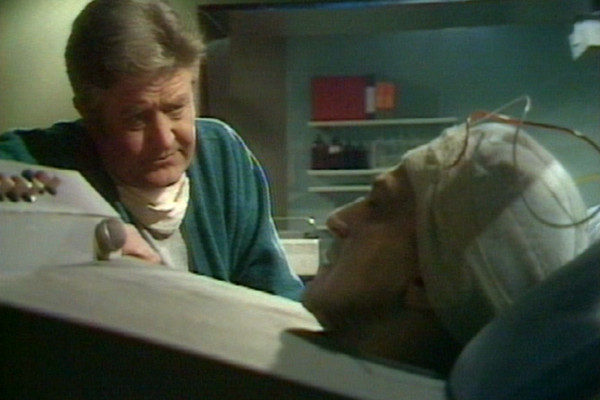
An appropriately dark tale, whereby a man wants to live on as a brain kept alive by machine, long after his body has died. Quist, an old friend, is the man appointed with talking the man into euthanasia. There are some interesting themes at work here, such as the concept of man being the only animal cognisant of his own mortality, but the story is stationary by its very nature, and the subtexts are spelled out to the viewers. The episode's real attraction lies in talented Doctor Who actor Patrick Troughton playing a dual role as the dying man and his own son. Although Troughton's "Scottish" accent is, if anything, even worse than his "cockney" one in The Sweeney, the quality of his performance shines through regardless.
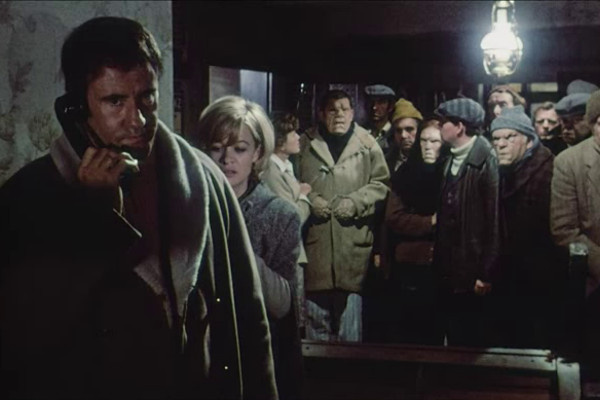
Between seasons two and three Tigon British Film Productions released a 92-minute movie based on the series. Starring Ian Bannen as new Doomwatch member "Dr. Del Shaw", it features his investigation into a remote island while the rest of the Doomwatch regulars (save John Nolan) are relegated to around just 15 minutes of screen time. Particularly badly hit is Simon Oates's wildly-dressed ladies' man John Ridge, who becomes far more conservatively dressed for the big screen... Oates later revealed he only agreed to appear as the fee was good. Naturally, being a film production, the five-person Doomwatch office becomes a multi-staffed, multi-level office.
Tigon was mainly known for horror productions, and it shows with this effort, which is a low-key thriller with some charm, but unique in the Doomwatch canon. Based on a script by creators Pedler and Davis, the final draft was written by Clive Exton. While the programme contained some mild bad language in its post-watershed timeslot, it's something of a surprise to hear Quist apparently described as a "mad fucker" late into the film.
While the large "header images" in these articles usually attempt to reflect the episodes covered within, a decision was made to take stills from the movie for this particular series. The film has been released on Blu-Ray, and consequently has a far greater picture quality than the badly degraded BBC episodes, and so all the header images - save for the mushroom cloud taken from the TV opening credits - are sourced from this movie.
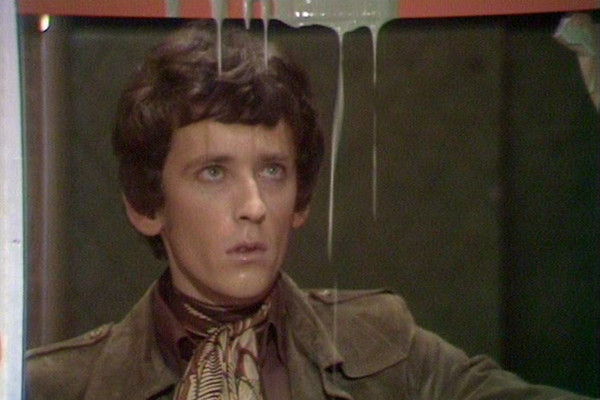
A high placing for a striking first episode that's nevertheless let down hugely by the BBC's budget. Featuring a plastic-devouring virus that causes aeroplanes to crash, said event is brought to screen by the combination of cheap sets, stock footage of aeroplanes and some appalling colour-separation overlay. As a contemporary of Doctor Who, Doomwatch is in the unenviable position of making Jon Pertwee's era look slick and sophisticated in comparison.
It's not just the effects budget where Doomwatch pales in comparison with the family tea time show... while no one would ever champion Doctor Who as doing trailblazing work in the name of gender equality, it actually manages to have more developed and rounded female characters than this supposedly adult series. At the time this opening episode aired, Doctor Who had educated scientist Liz Shaw... yet even her far more demeaning replacement the following year, Jo Grant, is leagues above cartoonish secretary Pat Hunnisett, played by Wendy Hall.
If there's one thing that dates Doomwatch more than even the production values, it's the treatment of women. John Ridge's first remark about Hunnisett is "she would have introduced us... but I pinched her bum just before lunch. Hunger, nothing more" and the character is so one-dimensional and offensively air-headed that it's a genuine surprise her character name doesn't read "Dolly Bird" in the end credits. Robert Powell offered a slight justification, in that this first episode was actually recorded in 1969, and they were just trying to reflect the standards of the time.
It's an interesting point of view, and one serious way in which television of the past scores over a large chunk of modern television is that there was often no "authorial voice" giving the characters an enforced moral compass or opposing point of view. The following year after this aired, another series covered on this site, Budgie, would cast Adam Faith as a racist, sexist, homophobic, wife-beating thief, and cast him as the nominal "hero" of the piece. The audiences weren't being informed by the programmes that such behaviours were "wrong" or "right", but were instead left to draw their own conclusions about morally questionable, heavily conflicted characters of the day. Yet when every plot point is explained to the ludicrously unintelligent Hunnisett, and a later episode gives us the dialogue "register your brain waves... if we can find any", then it's a justification that isn't entirely watertight.
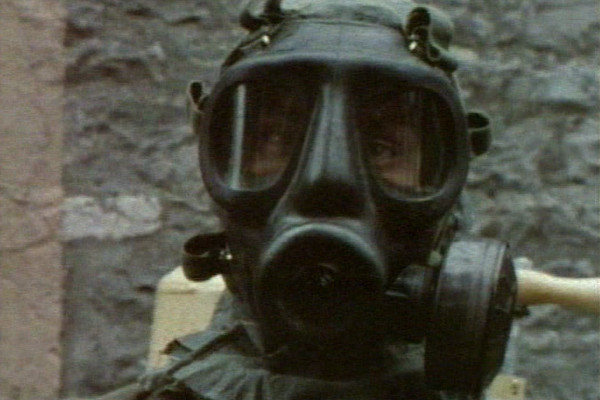
The most-watched episode of the series, with 13.6 million viewers tuning in. Although this does make the story lauded, it does beg the question as to how popular it really was, as by definition the viewing figures dropped afterwards. It also doesn't take into account that Doomwatch, while a hit series, was still frequently beaten in the ratings by whatever ITV was serving up. This particular episode's main competition was a Sheila Hancock sitcom called Mr. Digby Darling, which is now largely forgotten, but was, at the time, a big ratings hit.
The first of five episodes by Martin Worth, who was later given the role as an unofficial script editor, this is one where the budget, for once, is on screen. The story's reputation almost exclusively relies on its last few moments, where an army battalion drives into a village to evacuate it in the event of a viral outbreak.
There are some odd moments in the episode, from the era-defining shot of a Golliwog, down to the incredibly wooden guides who get lost in the caves. Perhaps the most inexplicable is a lengthy shot of a young girl putting a penny in a NSPCC charity box, which takes an inordinate amount of screentime. It's unclear if director Jonathan Alwyn intended this as a clever allusion to the nature of the guides stuck in the cave network, or whether this was simply a case of filling time. Regardless, the end result is of a suitably bleak, downbeat episode that sticks in the mind after the final credits have finished rolling.